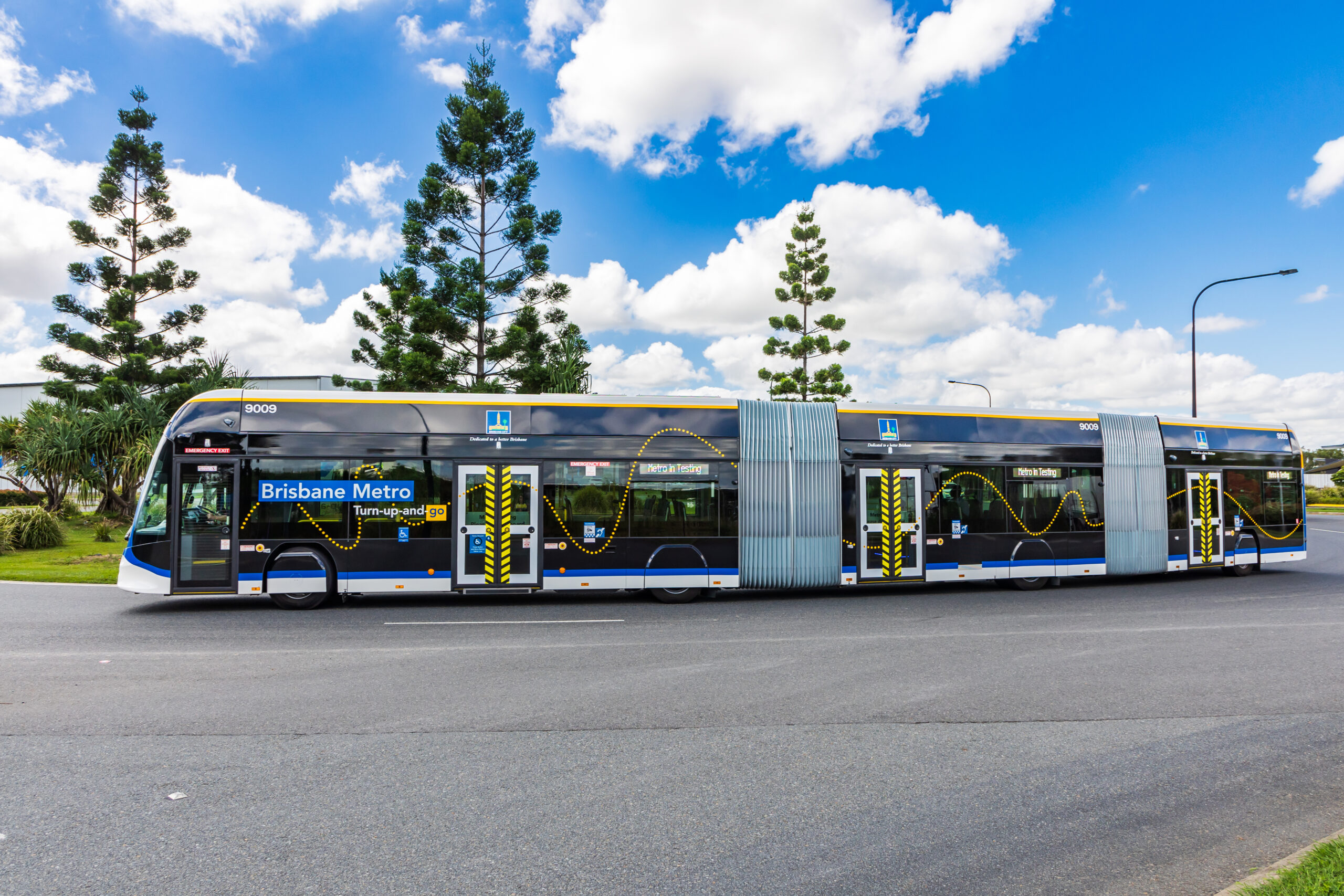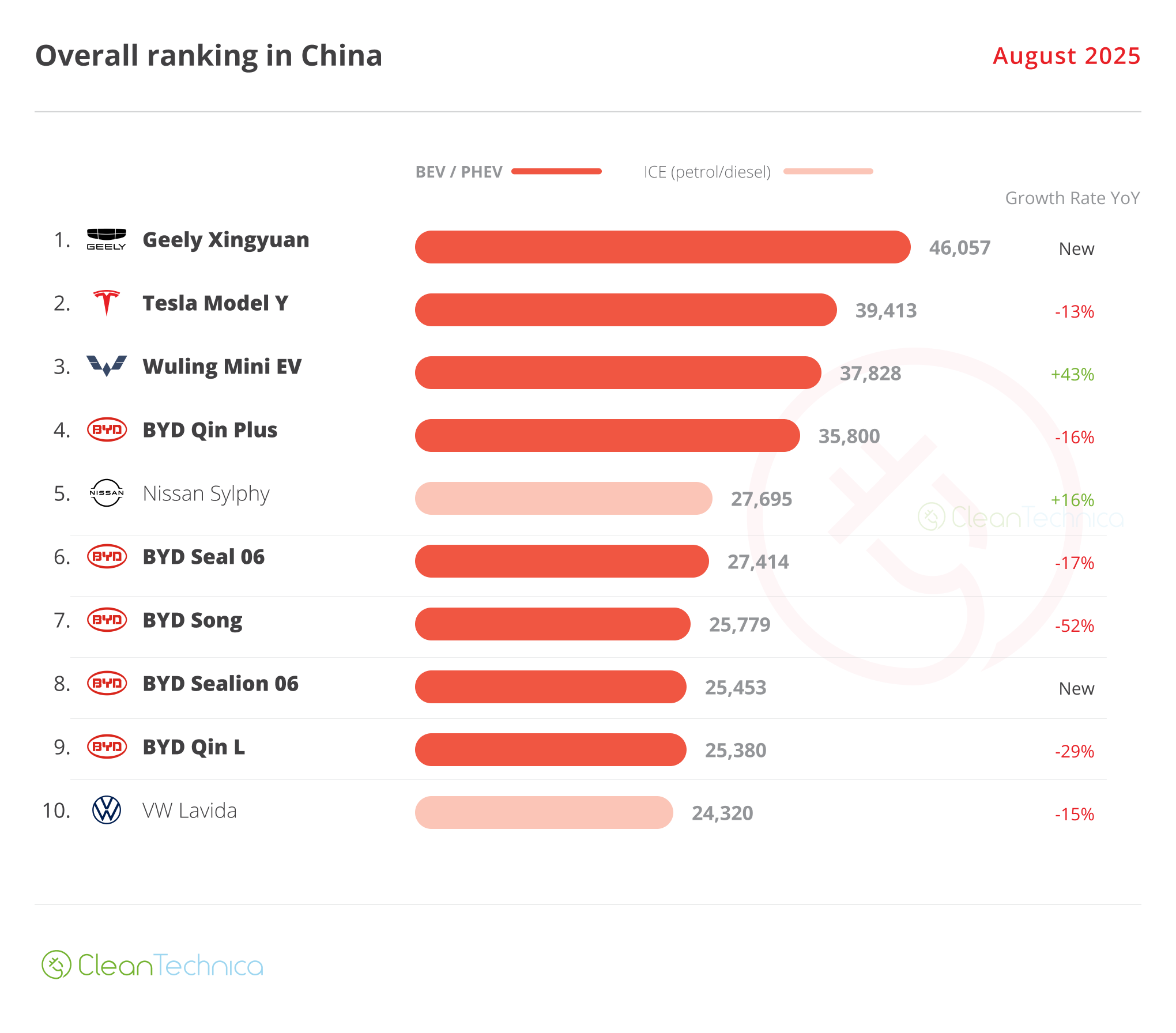Support CleanTechnica’s work through a Substack subscription or on Stripe.
September saw plugin EVs at 31.1% share in Germany, up from 23.7% share year-on-year. BEV volume increased by 32% YoY, while PHEVs grew 85%. Overall auto volume was 235,528 units, up some 13% YoY. September’s best-selling BEV was the Volkswagen ID.3.

September’s auto sales saw combined EVs at 31.1% share in Germany, with full electrics (BEVs) at 19.3% share, and plugin hybrids (PHEVs) at 11.8%. These compare with YoY figures of 23.7% combined, 16.5% BEV, and 7.2% PHEV.
Since 2024 was a low baseline, let’s look at the YTD progress vs. both 2024 and 2023. Combined plugins are now at 28.4% YTD, with 18.2% BEV and 10.3% PHEV. 2024’s respective figures were 19.3%, with 13.1% BEV and 6.3% PHEV. 2023’s respective figures were 23.9% with 18.1% BEV and 5.8% PHEV.
So although 2025 is looking much better than 2024, with a 9.1% additional share of the market going to plugins, it is only marginally better than the same period in 2023. All of that marginal improvement is down to the growth of PHEVs over the two intervening years.
What’s also different since 2023 is the lack of BEV incentives now (after being cancelled in December of that year). In short, the transition has recovered from that trauma and is now advancing under its own steam (a more robust path than relying on incentives) – and is less vulnerable to future setbacks.
PHEVs are back to a share they last saw in 2021 and 2022, but the difference this time around is that the new generation of PHEVs have an electric range of over 80 km in most cases (vs. mostly under 50 km previously). This generation is thus more likely to contribute to “mostly electric km” of the overall vehicle fleet during their 15+ year lifespan. As Germany’s transition continues over the next couple of years, PHEVs will plateau and then fade away, as they did in Norway.
Combustion-only powertrains continue to diminish (further aided by HEVs grabbing 1.8% additional share of the market YoY). Their combined YTD share is now down to 42.6% (14.6% diesel and 28.0% petrol). This compares with 54.4% a year ago (17.9% diesel and 36.4% petrol).
We may expect December 2025 to see combined ICE-only share to reach close to 35% for the month, and under 40% for the full year.

Best-Selling BEV Models
Having had a quieter first half of the year, the Volkswagen ID.3 staged a comeback to take the pole-position in July, and has remained at the top ever since – an impressive feat – with 2,979 units in September.
The ID.3’s sibling, the Volkswagen ID.7 – which had been dominating in H1 – took second place in September, with 2,497 units. Their cousin the Skoda Elroq took third position, with 2,565 units.

For me, the Skoda Elroq continues to stand out as the great success story of the year in terms of its rapid ascent to popularity. Having only debuted in February, it was in the top 10 by March, and the top 5 by April. It has mostly been in the top 3 since May, a great result. It’s also quite a lot of vehicle given the starting price of €33,900 – a value proposition which has been key to its success.
Just outside the September podium, in fourth, the Tesla Model Y recovered a bit of ground in its end-of-quarter push, but not back to the levels of its outlandish dominance over the past three years. As a reminder, the Model Y was Germany’s best-selling BEV in 2022, 2023, and in 2024. Year-to-date 2025, however, it only ranks 9th! It may make up one or two places in a big December push, but this is a striking fall-from-grace in the country which produces all of Europe’s Model Ys (at the Berlin-Brandenburg Gigafactory).
Apart from the usual monthly variations in ranking, there were two important new entrants to the top 20 in September. The new Mercedes CLA sedan, which only saw its first decent customer volumes in July, has now stepped up to 14th spot, with 879 units.
Perhaps even more importantly, for the mass-market transition, the new Ford Puma also saw its entry into the top 20 for the first time since debuting in April. It grabbed 20th spot with 756 units in September. As a reminder, the Puma starts from €36,900, and should have room to trim these prices if and when Ford gets serious.
There were two proper debutants in September, and a couple more models seeing pre-sale testing units. Kia launched their EV4, with 228 initial units, a strong start. The EV4 is a C-segment hatchback, with a length of 4,430 mm, styled like a shrunken version of its older sibling, the EV6 (4,680 mm). It starts from €37,900 for the 55 kWh (usable) variant, with 406 km WLTP, and 10-80% charging in 30 minutes.
Leapmotor launched the B10 SUV, a larger C segment offering, with a length of 4,515 mm. This one starts from a very competitive €29,900 for the base 55 kWh (usable) LFP battery, with 361 km (WLTP), and 10-80% charging in 24 minutes. A 65 kWh (usable) option (434 km WLTP) is available from €32,400. The Leapmotor B10 is a great value proposition, let’s see how it gets on in Germany.
Suzuki registered 6 units of their new Suzuki e-Vitara (see here for specs), but it’s not yet orderable on their website, so we will have to wait longer for customer deliveries. Likewise, the Changan sub-brand, Deepal, registered some testing units of its S05 and S07 models, but these are not yet available to order on the website. We will revisit these when proper customer volumes arrive. Kia also registered a single unit of their new PV5 modular van, but again, this is for testing-only for now.
As for the small-and-affordable segments, in the sub-€20,000 range, the Leapmotor T03 sold an impressive 630 units, and the Dacia Spring sold 359 units. Moving up to the €20-25,000 price range, the leader here was the Hyundai Inster, with 835 units, followed by the Citroen e-C3 with 388 units, and the BYD Dolphin Surf, with 344 units. The Fiat Grande Panda scored 140 units.
In the €25-29,999 price segment, the Volkswagen ID.3 is priced within this range in the domestic market (unlike in most other European markets, e.g. it’s €34,990 in France). So obviously the ID.3 dominates volume here, with its 2,979 units. Likewise, the Mini Cooper now comes within this threshold in Germany (but is much more expensive in most neighbouring markets), and sold 1,714 units. The (much weaker) first generation Mini Cooper BEV was priced from €32,500 in Germany, so its price (and value) has improved considerably. The Opel Corsa saw 676 units, the Renault 5 sold 457 units, the Opel Frontera, 269 units, and the Renault 4 saw 159 units. The Leapmotor B10 also starts within this threshold, so let’s keep an eye on it in the months ahead.
In sum, 8,972 BEVs with starting prices below €30,000 were registered in September, some 20% of Germany’s total BEV market.
Let’s now check the trailing 3-month rankings:

Given what I mentioned above about the VW ID.3’s recent string of pole-positions, obviously it leads the Q3 chart, with a healthy gap over its sibling the ID.7. The Skoda Elroq is in third.
Most of the upper ranks are pretty stable, and there were no first time entrants to the top 20. Just outside, the Renault 5 climbed 3 spots since the prior period, to 22nd place, and may enter the top 20 before the end of the year. The Leapmotor T03 has just had its biggest three months, and now stands in 28th position (from 39th prior).
The new Mercedes CLA has already climbed to 29th place, and we might expect it to creep into the table by December. Likewise the new Ford Puma has now climbed to 33rd and still has room to grow.
Let’s now have a quick check on the manufacturing groups:

The top 5 rankings remain unchanged. Volkswagen Group remains dominant, though share has dropped from Q2’s 45.6% down to 40.8%.
BMW Group’s share increased from 11.5% to 12.8%. Stellantis increased from 8.8% to 9.7%. HMG was barely changed, and Mercedes Group increased from 6.1% to 7.5%.
Tesla recovered a bit, climbing from 8th to 6th and from 2.9% to 4.5% but likely won’t overtake Mercedes Group between now and December.
Outlook
Germany’s overall year-to-date auto market is roughly unchanged in volume from 2024. PHEVs have been the main growth story in 2025, at the expense of combustion-only powertrains.
The German economy remains stagnant, with the latest GDP data from Q2 2025 showing weak YoY growth of 0.2%. Inflation crept up to 2.4% in September from 2.2% in August. ECB interest rates have been flat at 2.15% since early June. Manufacturing PMI fell to 49.5 points in September, from 49.8 points in August.
What are your thoughts on Germany’s progress? Where will BEV share be in December, and over full-year 2025? Please share your insights and perspectives in the comments below.
Sign up for CleanTechnica’s Weekly Substack for Zach and Scott’s in-depth analyses and high level summaries, sign up for our daily newsletter, and follow us on Google News!
Have a tip for CleanTechnica? Want to advertise? Want to suggest a guest for our CleanTech Talk podcast? Contact us here.
Sign up for our daily newsletter for 15 new cleantech stories a day. Or sign up for our weekly one on top stories of the week if daily is too frequent.
CleanTechnica uses affiliate links. See our policy here.
CleanTechnica’s Comment Policy




